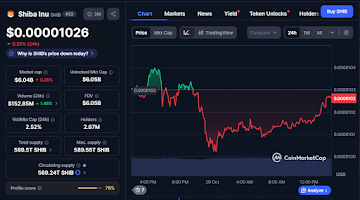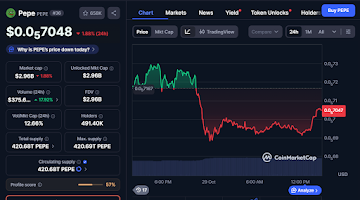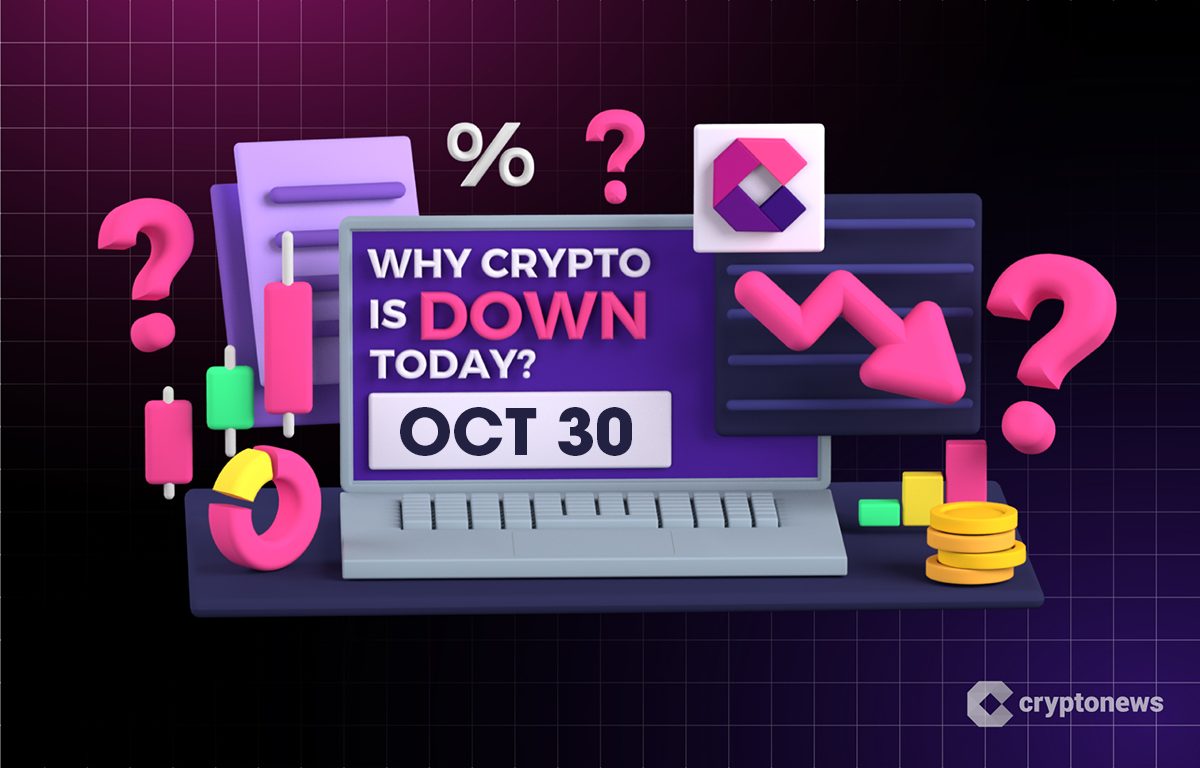Shiba Inu Price Prediction vs PEPE and the Rising Meme Coin Expected to Flip Both Before 2026
The meme coin market is evolving fast, with Shiba Inu (SHIB) and PEPE once again drawing investor attention. Many traders are following the latest Shiba Inu price prediction as the token tries to reclaim its former momentum.
However, there is a new player, Layer Brett (LBRETT) that is taking shape on the Ethereum Layer 2 network with better foundations and improved technology. Analysts are confident that Layer Brett will beat both Shiba Inu and PEPE by 2026 and become a new performance-related meme coin leader.
Shiba Inu Price Prediction shows hope but limited energy
Shiba Inu has spent months in a narrow trading range. Its current structure reflects long-term consolidation, but analysts say this could change soon. The Shiba Inu price prediction shows resistance around $0.00001740, and a breakout above this could trigger a strong recovery. 
Source: CoinMarketCap
Despite this outlook, Shiba Inu’s progress depends heavily on renewed community engagement and consistent ecosystem upgrades. The coin’s slow pace contrasts sharply with Layer Brett, which operates at higher speed and lower cost through its Ethereum Layer 2 design. While Shiba Inu remains popular, its transaction model still struggles with scalability, a weakness that Layer Brett has effectively solved through advanced network architecture.
PEPE faces a technical ceiling as momentum cools
PEPE is trading within a tight band and is fluctuating between $0.000007090 and $0.000007270. The volume has grown but the price movement has been limited. Analysts note that the token’s recent 0.67% uptick suggests stability, not expansion.
Without a clear utility framework, PEPE’s growth relies mainly on community interest and trading speculation.
Source: CoinMarketCap
The project’s simplicity once fueled its rise, but that same simplicity now limits its reach. Unlike PEPE, Layer Brett (LBRETT) integrates smart contract functionality and staking features into its structure.
This combination offers both entertainment and tangible rewards. Where PEPE delivers nostalgia, Layer Brett delivers measurable value through speed, engagement, and blockchain innovation.
Layer Brett introduces a new phase for meme tokens
Layer Brett (LBRETT) represents a modern approach to meme coins. Built on Ethereum Layer 2, it supports rapid, low-cost transactions while maintaining full decentralization. This makes it more efficient than older meme tokens still operating on congested Layer 1 systems.
Analysts describe Layer Brett as the bridge between culture and performance. It captures the humor and energy that drive meme tokens but adds the scalability missing from earlier generations.
Why Layer Brett is projected to outperform by 2026
Both Shiba Inu and PEPE continue to attract attention, but they operate on older frameworks. Their transaction speeds, fees, and network congestion issues limit future potential. Layer Brett, on the other hand, uses Layer 2 optimization to process transactions faster and cheaper while enabling higher interaction capacity.
Experts believe this technical advantage will define the next phase of meme coin evolution. Layer Brett (LBRETT) fits this demand perfectly, combining cultural relevance with real blockchain strength.
Conclusion
The Shiba Inu price prediction remains optimistic as technical patterns hint at a possible breakout. PEPE maintains modest stability but faces a ceiling without new development. Meanwhile, Layer Brett (LBRETT) has redefined the meme coin landscape with its scalability and staking features.
It delivers the functionality older tokens lack, offering investors both excitement and efficiency. Analysts agree that Layer Brett stands as the most likely project to flip both Shiba Inu and PEPE before 2026.
Find out more below about the next big meme coin in the crypto space:
Website: https://layerbrett.com
Telegram: https://t.me/layerbrett
X: (1) Layer Brett (@LayerBrett) / X
 Disclaimer: This is a paid post and should not be treated as news/advice. LiveBitcoinNews is not responsible for any loss or damage resulting from the content, products, or services referenced in this press release.
Disclaimer: This is a paid post and should not be treated as news/advice. LiveBitcoinNews is not responsible for any loss or damage resulting from the content, products, or services referenced in this press release.
The post Shiba Inu Price Prediction vs PEPE and the Rising Meme Coin Expected to Flip Both Before 2026 appeared first on Live Bitcoin News.
You May Also Like

Why Is Crypto Down Today? – October 30, 2025

The UFC collaboration project, FIGHT tokens, raised $183 million in its public offering, exceeding its target by more than 100 times.
